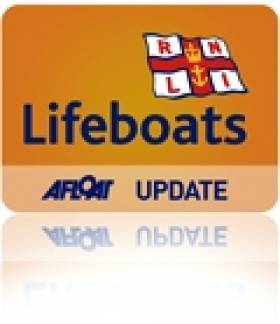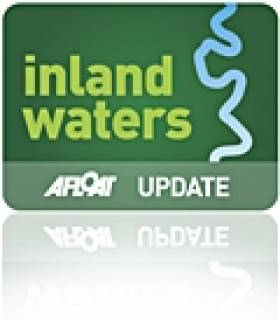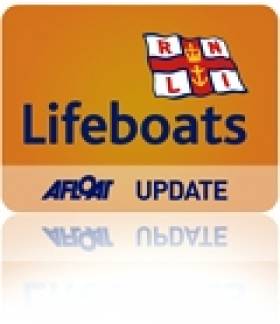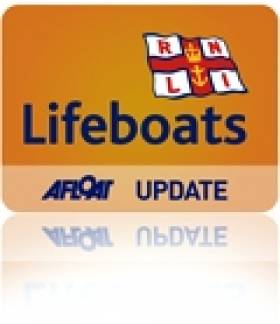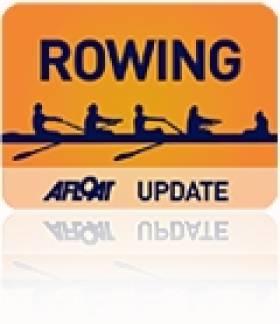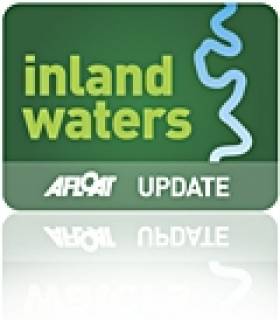Displaying items by tag: Enniskillen
New Lifeboat Station For Upper Lough Erne
#RNLI - Enniskillen RNLI is to get a new lifeboat station at its Carrybridge base on Upper Lough Erne, it has emerged.
Planning permission for the new build has been passed by Fermanagh District Council and the RNLI’s tendering process is now underway, with a view for building work to commence in late summer.
Once complete, the modern station - much like the new facility for Castletownbere RNLI that opened recently - will replace the existing temporary accommodation which has housed the charity’s volunteer lifeboat crew for the past 11 years.
In order to facilitate the project, the local community is being asked to help the RNLI raise £60,000 (€70,000) towards the cost, which will help Enniskillen RNLI continue to save lives on Lough Erne.
In 2001, Enniskillen became home to the RNLI’s first inland lifeboat station based on Lower Lough Erne.
Due to the overall size and complexity of the lough and its high leisure usage, the decision was taken by the RNLI in 2002 to base a second lifeboat on the upper lough that would work in conjunction with the original lifeboat station on the lower lough.
With two bases, two inshore lifeboats and two rescue water craft, the station has since proved to be one of the busiest in Ireland.
Last year alone, Enniskillen RNLI launched 46 times bringing 50 people to safety. Some 20 of those services were carried out in the dark while the crew spent 169 service hours on the water.
RNLI divisional operations manager Gareth Morrison said he was delighted that planning had now been approved making way for what will be a purpose-built station in a location close to the lough allowing for an efficient launch.
"In an area that receives over 100 days of heavy rainfall a year, it is hard to believe the volunteer crew based at the upper lough operate from just a temporary facility, partly exposed to the elements," said Morrison.
"The crew has to change in a small, damp, metal container and only has a portaloo and wash basin for their comfort. There is nowhere for the crew to shower or dry after a challenging rescue and nowhere for them to gather and train together during the week.
"We want to build a modern station with full crew facilities with areas for the crew to change and train and space to keep their lifeboat and rescue water craft and lifesaving kit safe."
Enniskillen RNLI lifeboat operations manager Davey Robinson said a new station was what the crew deserved.
"At the moment we are operating out of a temporary facility. It is cramped and there are no showers so the crew cannot warm up after a cold, wet and tiring rescue. A new station will be great for the crew. We are a busy station so it is what they deserve."
He added: "It is always reassuring for locals and visitors alike that the RNLI is here to assist them or help their loved ones when they get into difficulty. We try to act as a safety net on Lough Erne and are here 24 hours a day. But we need the right facilities to do that and this new station will help."
Donations and other assistance with fundraising are welcome. For details contact Tony Hiney, RNLI community fundraising manager, at 087 219 8917 or email [email protected].
#InlandWaterways - Waterways Ireland has advised all masters and users of the Erne system that the channel east of Castle Island near Enniskillen will be closed till Tuesday 11 June to facilitate a number of events on the water.
Mariners are directed to follow the marked navigation channel and signs to the west of Castle Island and proceed at a slow speed and with minimum wash. They should note any advise or instructions given by event organisers when in this section of the navigation.
Public jetties in the vicinity will remain accessible throughout, though some minor restrictions may be in place as and when required. Further information is available from the Lough Erne warden at 028 6632 3004.
Elsewhere, there will also be restricted mooring for masters and owners on the River Shannon at Carrick-on-Shannon to facilitate spectator viewing of the Carrick 400 event.
On Sunday 2 June the quay wall from the downstream face of the town bridge to the floating moorings will be out of bounds for mooring from 7pm till midnight.
In other waterways news, recent water quality testing has shown the harbour at Kilcock on the Royal Canal to now be within normal bathing water standards.
Lifeboat Roundup: Windsurfers Rescued In Waterford; Boats Aground in Wexford, Lough Erne
#RNLI - The Dunmore East RNLI lifeboat was tasked yesterday (7 April) to assist two windsurfers in difficulty near Duncannon in Waterford Harbour.
In rough conditions yesterday afternoon, with south-east winds force 6/7 blowing, coxswain Pauly Daniels reached the casualties' position within 30 minutes.
By this stage one of the surfers had made it ashore safely at Duncannon. The Dunmore East lifeboat quickly located the other windsurfer a quarter of a mile north of Duncannon. The casualty was safely recovered from the water and landed ashore nearby.
Neither casualty was injured and did not need medical attention.
Nearby in Wexford, five teenagers were rescued from a small speedboat after it suffered engine failure and ran aground on the River Slaney around 1.20pm yesterday.
According to Lorraine Galvin, volunteer press officer at Wexford RNLI, the teens' "fast call for help to the coastguard greatly helped in ensuring their speedy rescue in cold, rough weather conditions".
At the time of the rescue there were wind speeds of force 5 south-easterly and a rough sea state. All of the passengers were starting to suffer from the cold and were treated for mild hypothermia.
Meanwhile, on Upper Lough Erne last Friday the volunteer lifeboat at Enniskillen RNLI (Carrybridge) launched to reports of a vessel that had run aground.
The RNLI lifeboat and rescue water craft were both launched and proceeded to the casualty's last known location 2.5 miles upstream from Carrybridge at Innishmore viaduct.
On route to the scene at the Innishmore viaduct, the volunteer crew got further information that the vessel had managed to refloat and was currently at Killygowan Island.
A full inspection was carried out and none of the crew on the casualty vessel were found to be in need of medical attention.
It was decided with the owner's permission that the volunteer crew would escort their vessel back to Carrybridge with the lifeboat leading and rescue water craft following as the navigation lights were not working.
Enniskillen RNLI Assist Sinking Vessel on Lough Erne
#RNLI - Enniskillen RNLI at Carrybridge was tasked on Tuesday afternoon (2 April) by Belfast Coastguard to reports of a boat taking on water and sinking on Lough Erne.
The lifeboat travelled 4km towards Enniskillen to the last known position of the sinking vessel. On arrival at the scene, the lifeboat crew saw that the occupants of the vessel were on land and that the vessel had been secured to a tree on the bank, though it was still taking on water.
The voluntary crew checked that everyone was present and there were no injuries. Once this was established, the lifeboat crew assessed the casualty vessel and found that the bung was missing.
They located two corks and these were made into a temporary bung. A salvage pump was set up and the water was removed.
The owner of the vessel was contacted and came to the scene. The vessel was judged by the RNLI crew to be capable of making the short distance back to Carrybridge where it was recovered onto a trailer.
Espersen Sees Galway Rowers Rule at Erne Head
# ROWING: Morten Espersen was an interested spectator for a fine day of rowing at the Erne Head of the River at Enniskillen today. The Ireland HPD saw a composite from Galway come home fastest of a strong field of men’s senior eights. The crews, which featured the experience of Grainne Mhaol along with NUIG and St Joseph’s, had three seconds to spare over UCD. The Dublin college had good reason to be pleased as they started third but were faster than Queen’s, who started ahead of them. Neptune’s junior 18 eight had a good ninth placing.
|



























